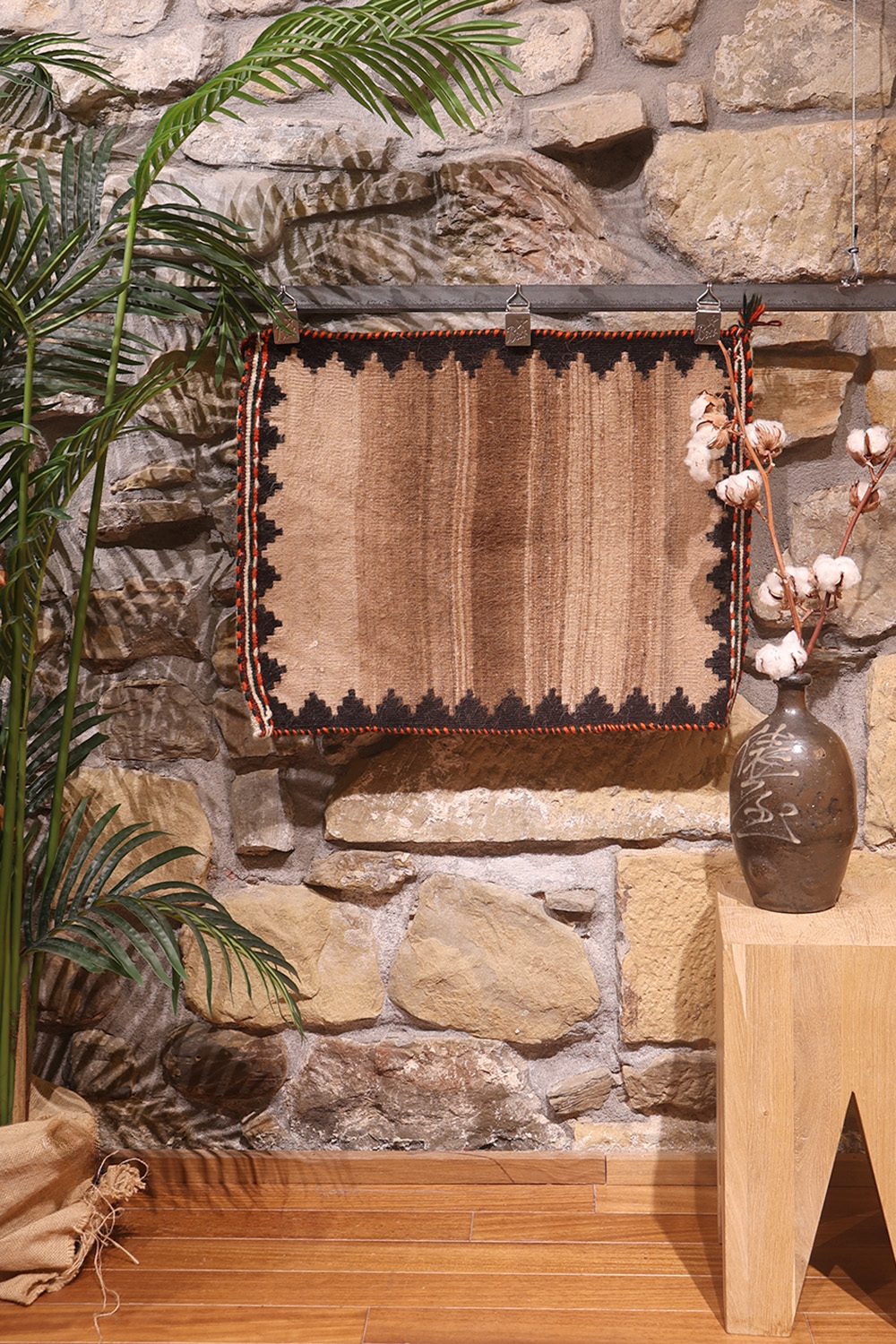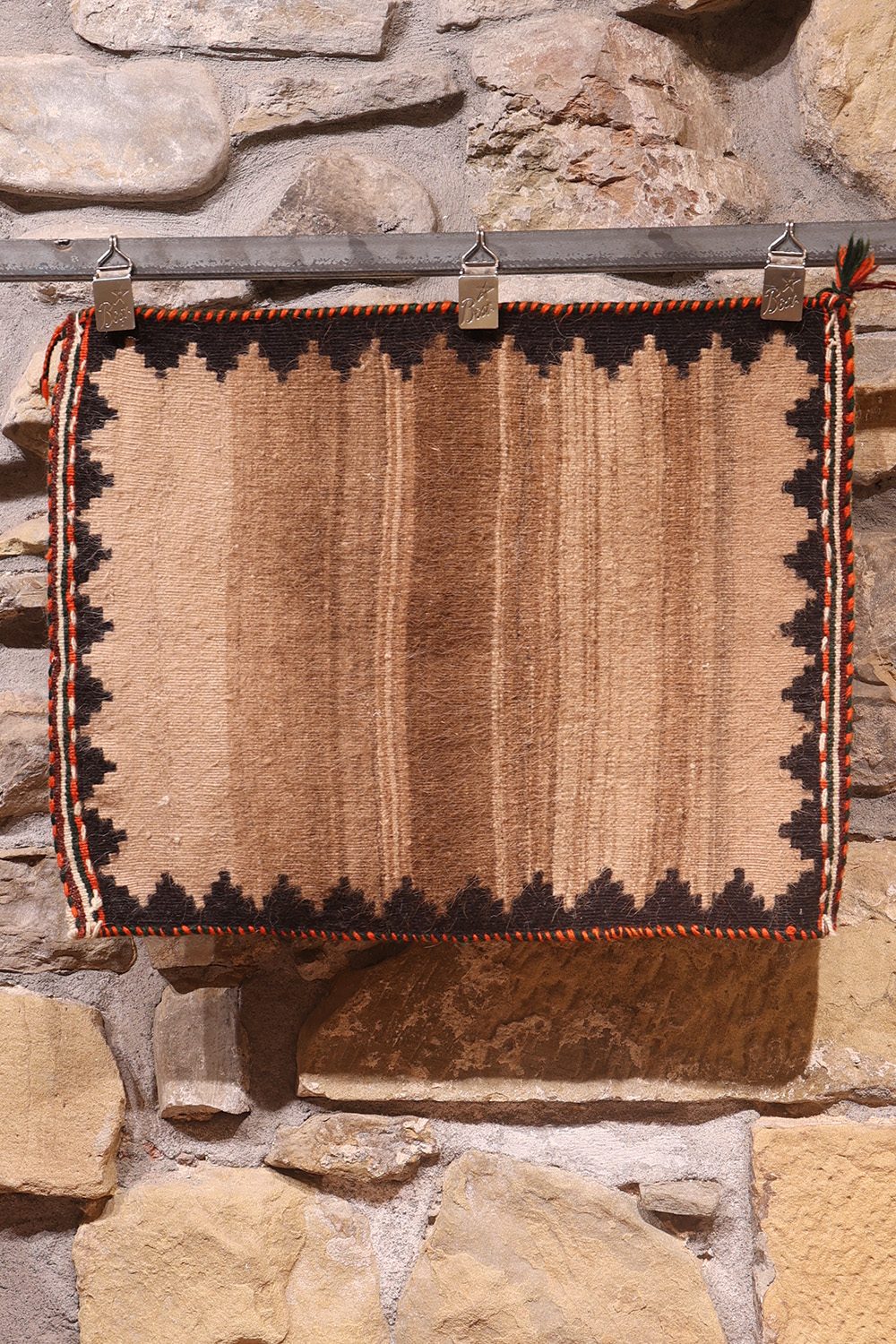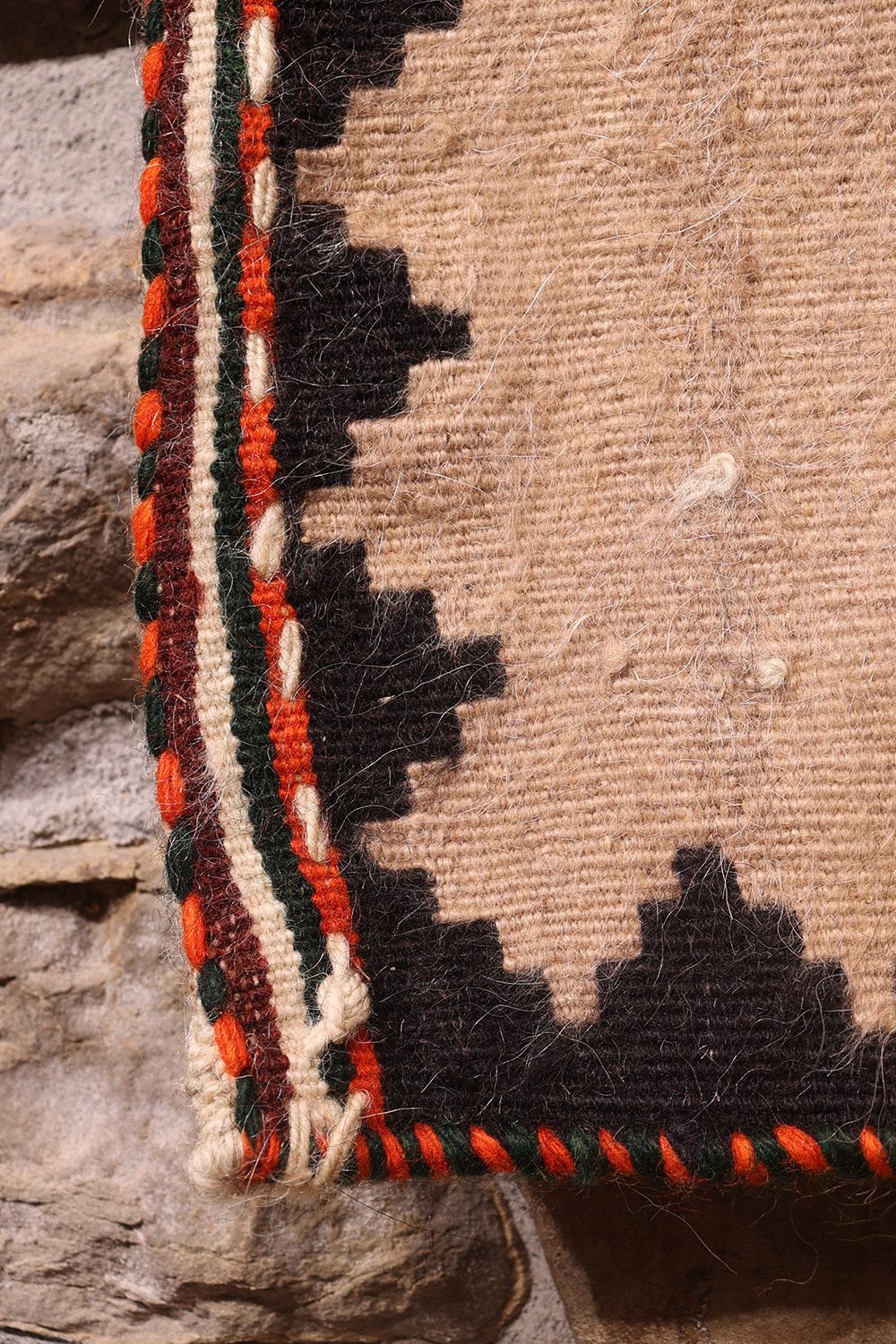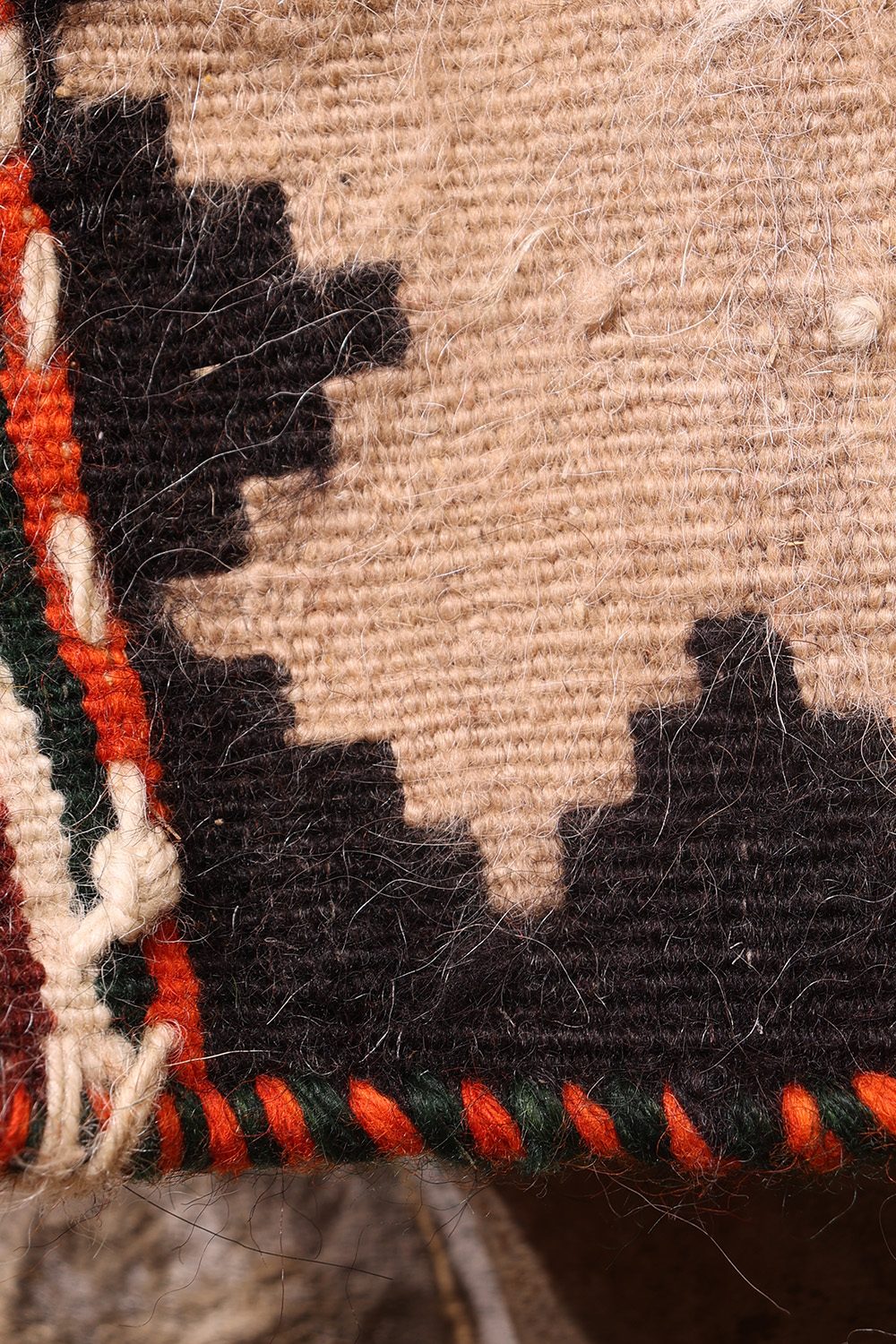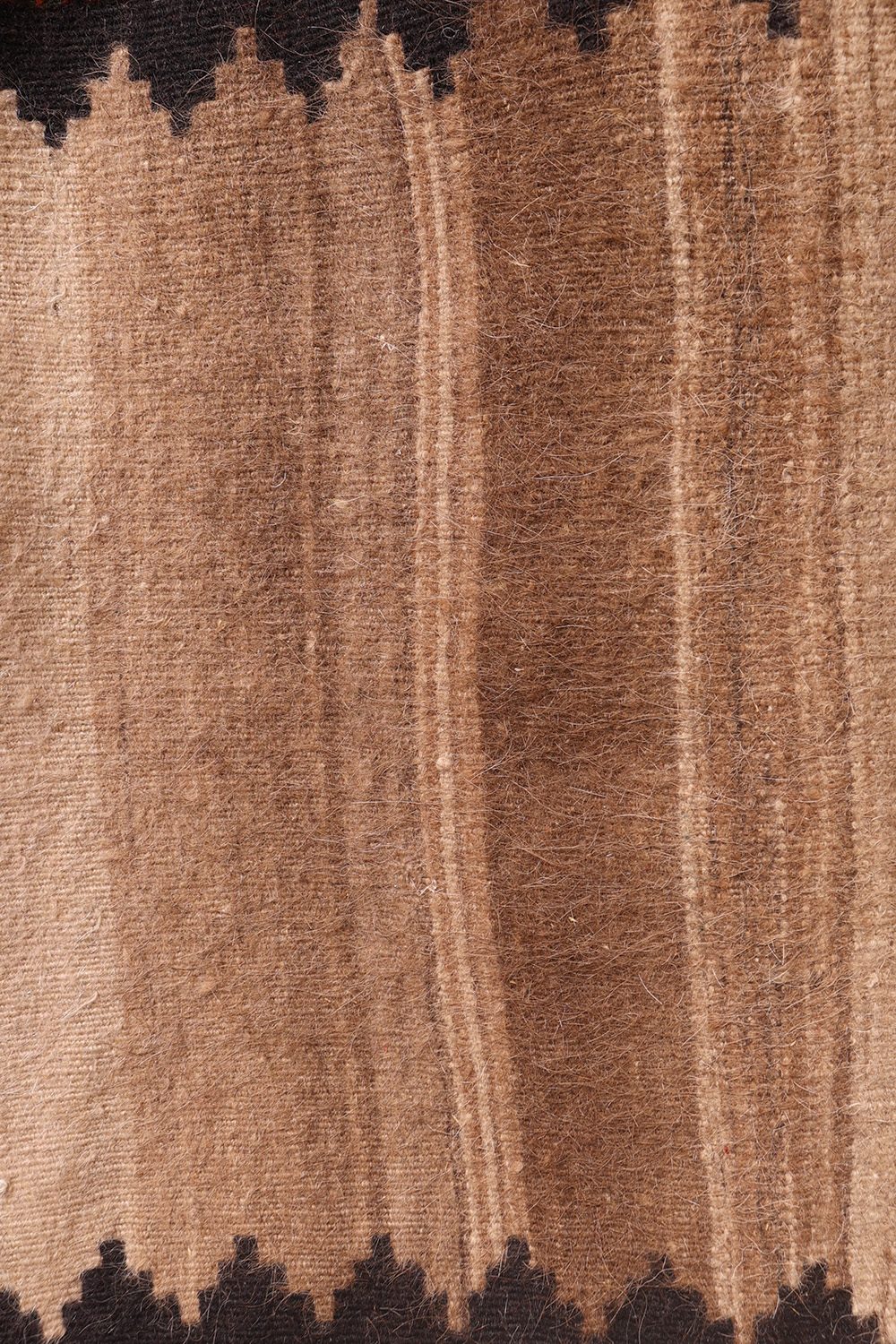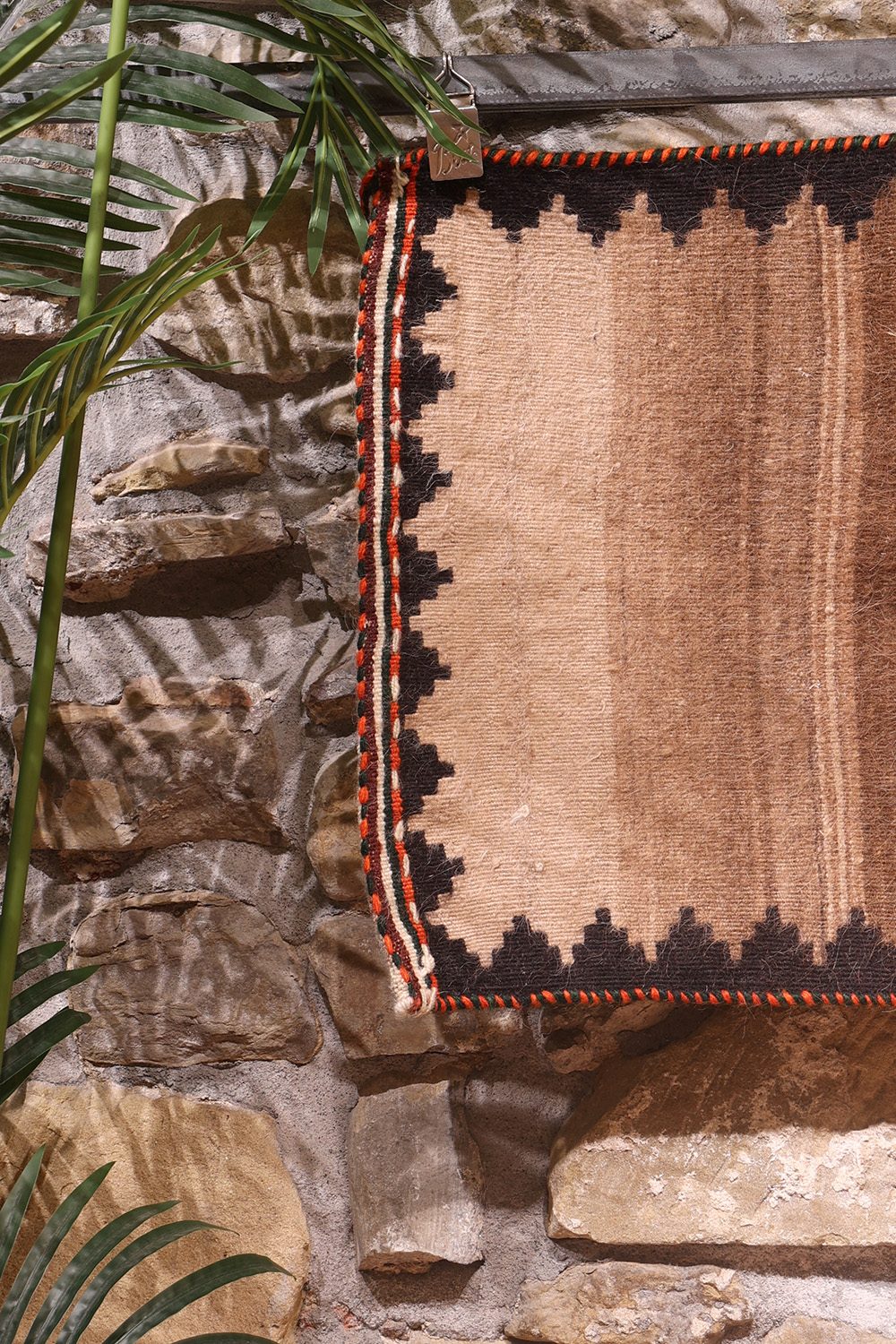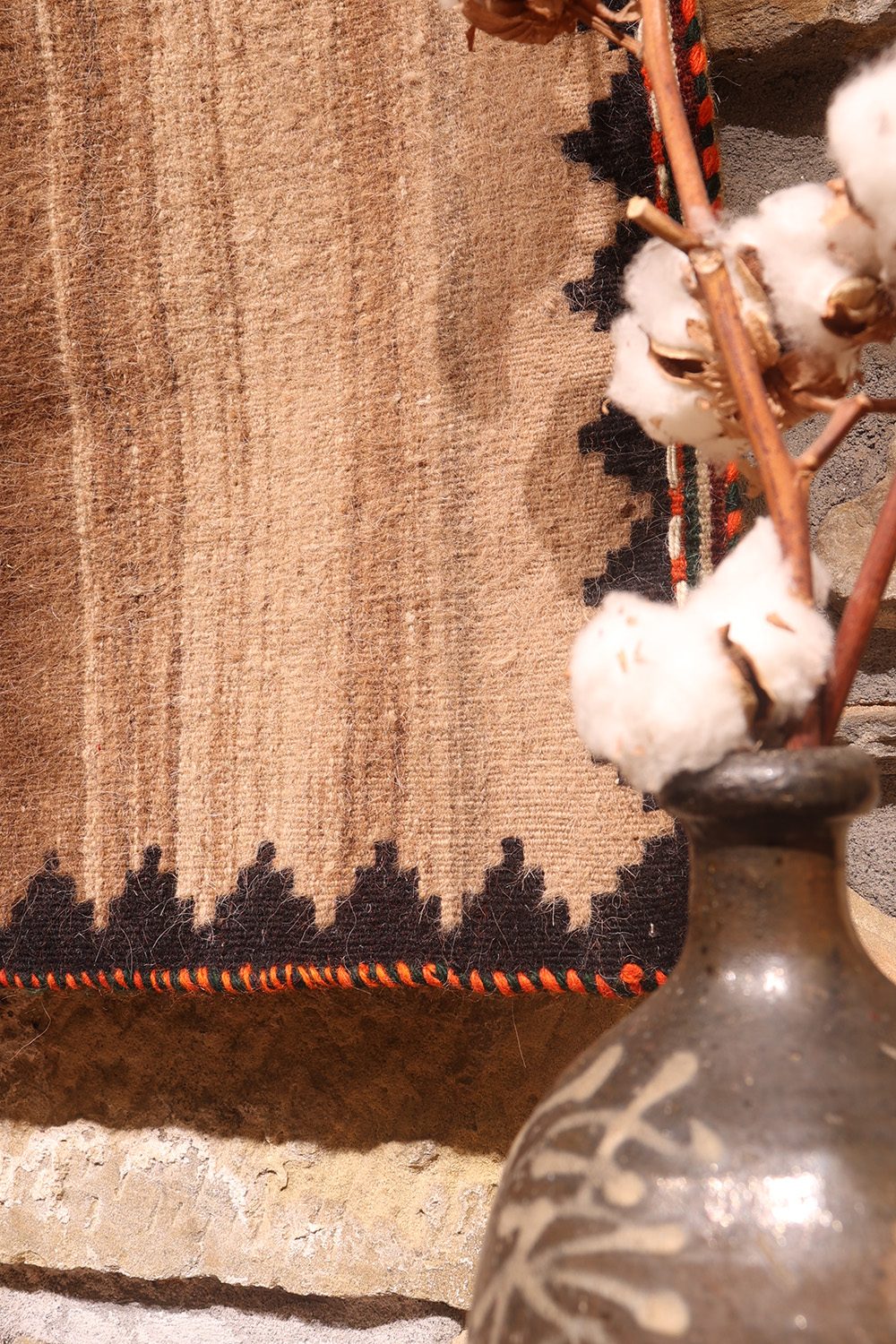95.00 €
This little Shia prayer rug was woven using camel wool for the central field, where it creates beautiful colour changes. The central field is surrounded by a more formal border. A beautiful little kilim.
Material: 100% hand-spun sheep wool and camel wool
Size: 67×52 cms
Origin: Qashqai tribe, Iran
Date of weaving: 1970s
It is generally accepted that Shia Muslims, unlike Sunnis, do not use kilims or prayer rugs as they pray directly on the ground, a stone or on a Turbah (or Mohr in Persian).
However, during the last 26 years on my frequent trips to southern Iran, I have repeatedly found that Shia Muslims in southern Iran use a type of small kilim that acts as a Janamaz or prayer kilim. I have acquired some of these tiny kilims directly from the person who used them for prayer and have been confirmed on numerous occasions that this type of kilim is used during prayer.
The small size of these prayer kilims is due to their function of covering the ground only in the area where the faithful will rest their head. The material used is always wool, which, in most cases, is left in its natural undyed colour, representing the earth. It is also significant that many of these kilims have been woven from camel wool in the central field.
Kilims or Gilims are flatwoven textiles with a woollen weft on a woollen, goat hair or cotton warp. There are many different techniques and designs. The weaver normally works within a tradition of techniques, motifs and designs specific to a particular area or ethnic group. The designs relate to her natural surroundings, protection, fertility and the harmony of family relationships. Each weaver adds something from her own creativity and sense of composition. Kilims are often woven as part of a marriage dowry and can be used to create many different objects like storage bags, horse-blankets, baby carriers, blankets and wall and floor coverings.
This kilim was hand-woven on a simple loom by a village or nomadic weaver for her own use. Probably the weaver used wool from her own sheep. The wool was first cleaned, then hand-carded, hand-spun and finally dyed by hand, often using natural dye materials like roots, nuts, berries, fruits, flowers and plants. Kilims from the last quarter of the twentieth century mostly use synthetic dyes. This kilim would have taken many months to complete.
All our kilims selected in the country of origin and are professionally washed and restored before we import them directly from Iran, Turkey and Afghanistan. Natural patina and charming imperfections in design and colour (abrash) are highly valued characteristics of hand-woven kilims.
1 in stock
Additional information
| Weight | 0.7 kg |
|---|
Subscribe and receive the lastest news
